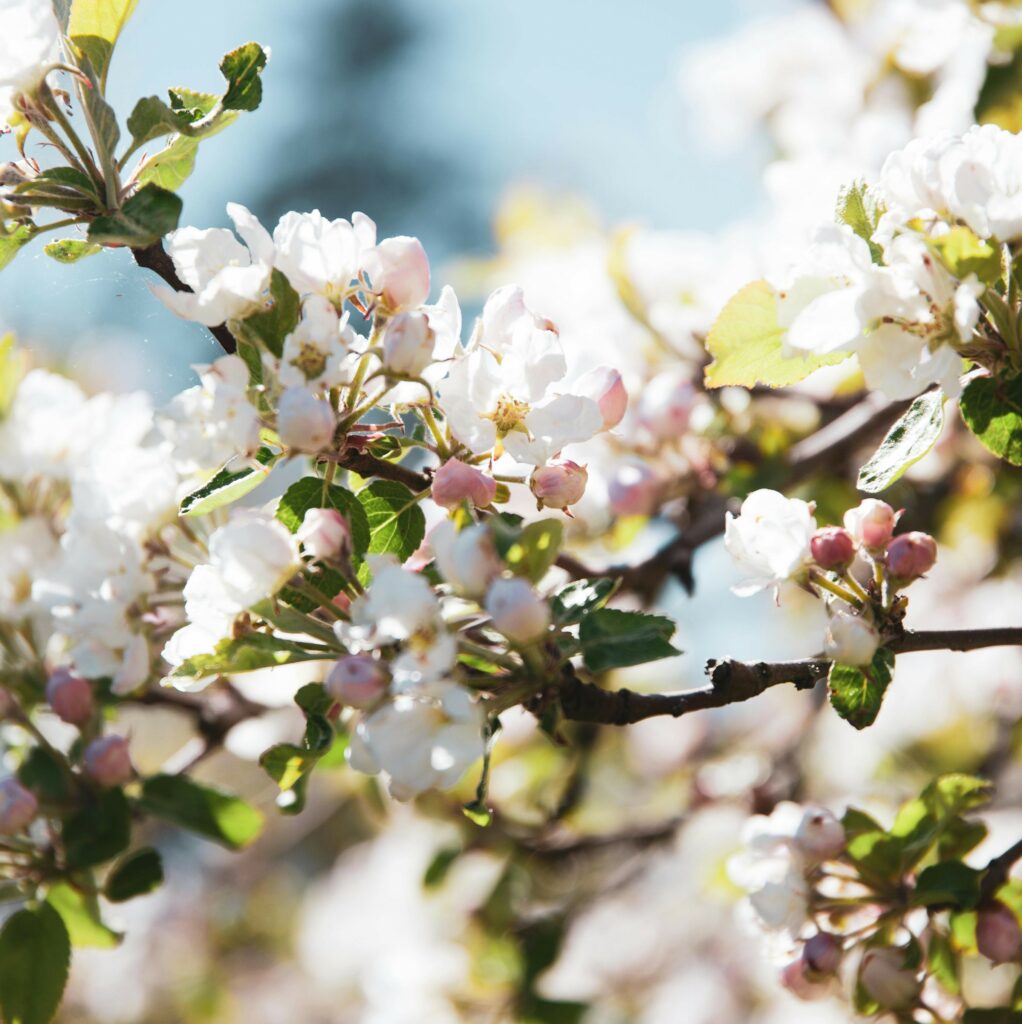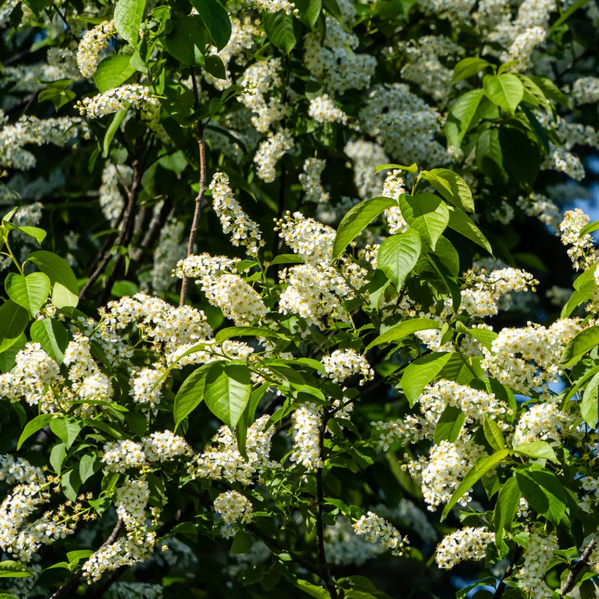The violets and ramps are done. The dandelions have stopped covering the yard. You’ve got knotweed and wild garlic mustard to last you for the next year. What are you supposed to do with yourself until fruit starts coming ripe??? Go fruit scouting, of course.
Some fruits can be hard to see when they’re actually ready to harvest. Luckily, their blossoms are much more visible! I have an app that lets me drop a pin on a map, along with a note, and when I discover a patch of future fruit, I mark it so I can come back later when it’s ready to harvest. Saves me a lot of time trying to remember where I found what (I always think I will remember. I never do. Ever.). So let’s check out some blossoms that let you know fruit will be on its way soon.
Apples and Crabapples
Native to most of the US and Canada, wild apples are cousins to the domesticated varieties. The medium-sized trees have coarse, pointed oval leaves and grey, scaly bark. Apple trees will grow anywhere that is not bone dry or sopping wet and has decent sun exposure. Cultivated crabapples are used as ornamental plantings, and often ‘escape’ into the wild through seed dispersal. Look for apple and crabapple trees along roadsides and in thickets and fields throughout our area.
Apple blossoms are five-petaled, pink to white, and very fragrant, appearing in early spring.


Hawthorn
Hawthorns are shrubs or small trees, most growing to 15 to 50 ft tall, with thorns. The thorns are small sharp-tipped branches that arise either from other branches or from the trunk, and are typically 2” to 4” long. The leavesof most species have lobed or serrate margins and are somewhat variable in shape.
The fragrant flowers are small, pinkish-white, and bloom in thick clusters from April to June. Each flower has 5 white petals with 10-20 stamens, and resemble small apple blossoms
Wild Plum
Wild plum grows in woodlands, pastures, and along roadsides and riverbanks. They prefer well drained soil, growing between 3’ and 24’ tall and forming thickets. The small branches are sometimes spiny. The leaves are alternate, egg-shaped to oval, and 2” to 4” long. The upper leaf surface is shiny green, while the lower surface is slightly hairy; leaf margins are sharply toothed.
The five-petaled white flowers appear before the leaves in April and May, in groups of 2 to 5 at the ends of branchlets.


Chokecherry
Native to the US and Canada, chokecherry matures into a large shrub or small tree, with glossy dark green leaves and bark ranging from grey to brownish-black. Smaller than wild black cherry, it may be found in thin stands, as dense thickets, or individually in open forest clearings. It prefers direct sunlight, and tolerates a wide range of soil types. In our area, chokecherries are quite common along roadsides and pasture borders.
White racemes of flowers, 3” to 6” long, appear in April and May.
Wild black cherry
Widespread in eastern North America, Black cherry is a sun-lover that primarily occurs in forest openings as well as in old fields and along fencerows at elevations up to 5,000 feet. Native trees grow up to 125’ tall; the bark of larger trunks is fissured and scaly. Leaves are alternate, simple, and ovate, with finely toothed margins, commonly with reddish hairs along the midrib beneath near the base.
The trees in our area bloom in May in long white racemes of tiny tubular flowers.


Barberries
Japanese Barberry is an invasive shrub native to Asia. Barberries are woody perennial shrubs growing from 3 to 8 feet high and armed with thin sharp thorns. Leaves are small, simple, and oval, tapering at the base. Barberries can grow in dense forest shade, but are most commonly found along road sides and field edges. They are also used as decorative nursery plants.
Blooming in April and early May, the flowers are small, pale yellow, and arranged in hanging clusters towards the ends of the branches
Look for part 2 of Identifying Fruit Blossoms later this week.
Happy foraging!



